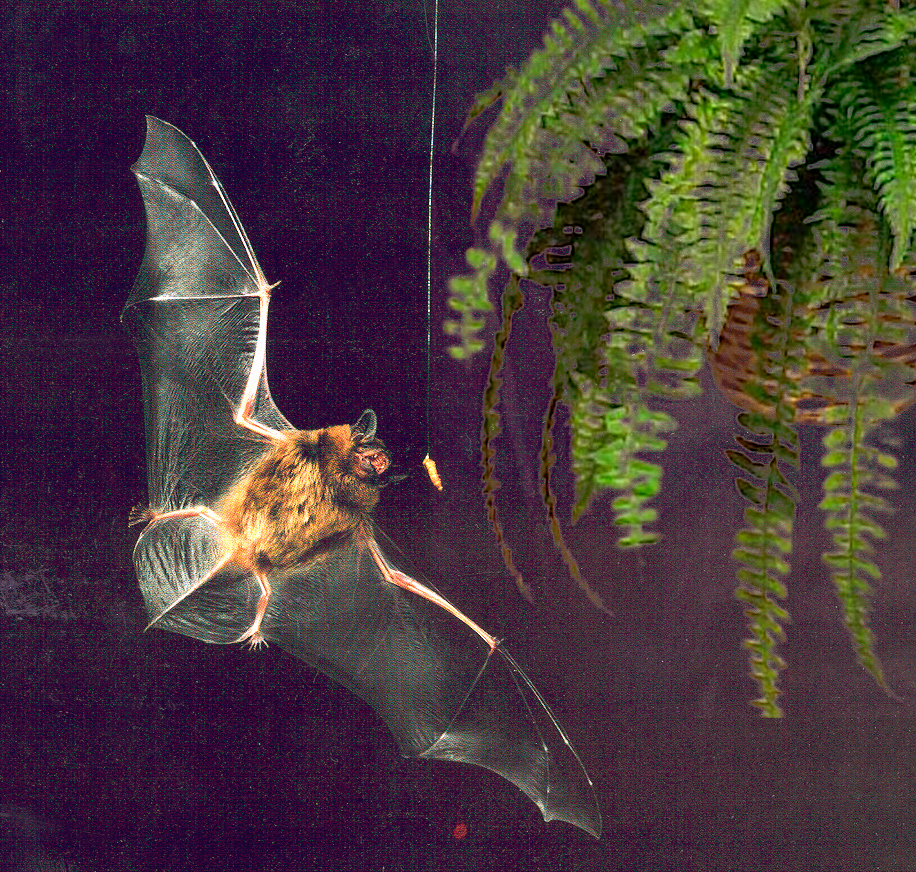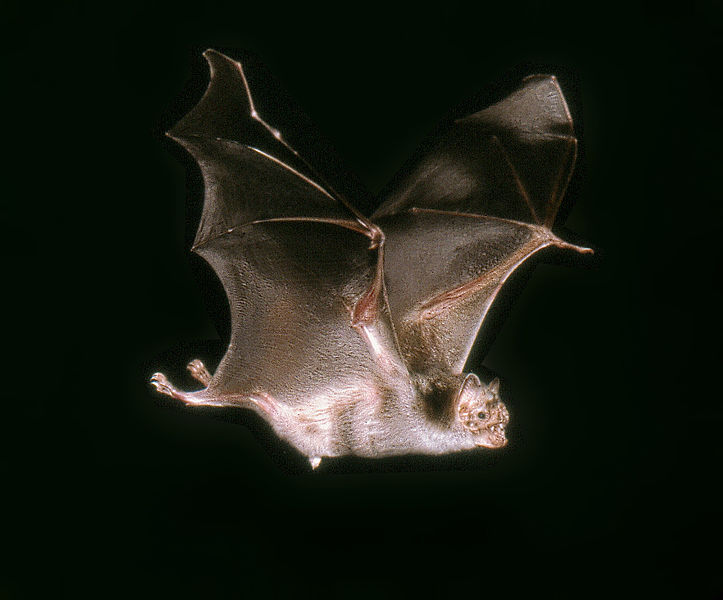Bat guano in your attic poses serious health risks, but with the right safety tips and removal techniques, you can handle it efficiently
Ever had that eerie feeling that something’s lurking above your head? You’re not alone. Imagine this: you’re comfortably nestled in your living room, but unbeknownst to you, there’s a growing problem right above you in the attic—bat guano. Yup, bat poop. While bats themselves are fascinating creatures, their guano is a different story. It’s not just a stinky nuisance; it’s a health hazard that needs your immediate attention.
Why should you care? Well, aside from the unpleasant odor and the mess, bat guano can harbor dangerous pathogens that pose serious health risks to you and your family. If you’ve recently discovered a pile of guano in your attic or are concerned about a bat problem, you’re in the right place. This article will dive deep into the nitty-gritty of bat guano, including the health risks, safety measures, and foolproof removal tips to help you tackle this problem head-on.
We’ll also share some savvy prevention tips to keep those winged critters from turning your attic into their personal restroom again. So, roll up your sleeves, grab your safety gear, and let’s get to work—your attic isn’t going to clean itself!
Key Takeaways
- Bat guano in attics poses serious health hazards, including diseases like Histoplasmosis.
- Proper safety precautions, such as wearing protective gear and ensuring good ventilation, are essential when dealing with bat guano.
- Following a step-by-step guide can help you safely and effectively remove bat guano from your attic.
- Implementing measures to seal entry points and bat-proof your attic can prevent future infestations.
What is Bat Guano?
Bat guano, simply put, is the excrement of bats. While it might sound like an odd thing to be concerned about, guano has a fascinating history and a significant impact on environments where bats reside. In nature, bat guano is a powerful fertilizer, rich in nutrients like nitrogen, phosphate, and potassium. However, when it accumulates in your attic, it becomes a problematic and potentially dangerous substance.
Bats are nocturnal creatures that often seek out attics as their roosting spots due to the quiet, dark, and secluded environment these spaces offer. Over time, their droppings can accumulate into sizable piles. Unlike other animals, bats tend to return to the same spot repeatedly, which means a single bat can produce a surprising amount of guano.
In addition to being unsightly and odorous, bat guano can lead to significant structural damage. The acidity of guano can corrode wood and other building materials, leading to costly repairs. Moreover, guano attracts other pests such as insects and molds, compounding the problem.
Understanding what bat guano is and why it accumulates in attics is the first step in addressing the issue. In the next sections, we’ll explore the health risks associated with bat guano and provide detailed safety and removal tips to help you manage this unwelcome attic guest effectively.

Health Risks of Bat Guano in Attics
Dealing with bat guano isn’t just a matter of cleanliness; it’s a significant health concern. Bat guano is notorious for harboring a fungus called Histoplasma capsulatum, which can cause a respiratory disease known as Histoplasmosis. When guano dries and becomes airborne, inhaling these fungal spores can lead to serious health issues, especially for those with weakened immune systems, young children, and the elderly.
Histoplasmosis is the most well-known disease linked to bat guano. Symptoms can range from mild flu-like symptoms to severe respiratory issues. Common symptoms include fever, cough, fatigue, and chest pain. In severe cases, it can cause chronic lung disease or even spread to other parts of the body, requiring long-term treatment.
Apart from Histoplasmosis, bat guano can also contribute to the growth of other molds and fungi. These organisms thrive in the nutrient-rich environment of guano, leading to additional respiratory problems and allergic reactions. The presence of guano can also attract other pests, such as insects and rodents, further exacerbating the potential for disease transmission.
Additionally, the mere presence of bats can pose a risk. Bats are known carriers of rabies, and while the transmission of rabies through guano is unlikely, the proximity of bats increases the risk of accidental bites or scratches.
Given these health risks, it’s crucial to address bat guano problems promptly and safely. Ensuring proper safety measures and following a systematic removal process can help mitigate these dangers. Up next, we’ll discuss the essential safety precautions you need to take before diving into guano removal.
Safety Precautions Before Removal
Before you jump into the task of removing bat guano from your attic, it’s essential to prioritize your safety. Handling bat guano without the proper precautions can expose you to harmful pathogens and allergens. Here’s a step-by-step guide to ensure you’re well-prepared and protected:
Wear Protective Gear
- Respirator Mask: A high-quality respirator mask (N95 or higher) is crucial to protect you from inhaling harmful spores and dust.
- Gloves: Use sturdy rubber or latex gloves to avoid direct contact with guano.
- Protective Clothing: Wear long sleeves, pants, and preferably disposable coveralls to minimize skin exposure. Consider using a disposable Tyvek suit for full-body protection.
- Goggles: Protect your eyes from dust and spores by wearing safety goggles.
Ventilate the Area
- Open Windows and Doors: Before starting the removal process, ensure good ventilation by opening windows and doors to allow fresh air to circulate.
- Fans: Use fans to help disperse airborne particles and improve airflow, but be cautious not to blow the guano particles around too much.
Preparation of the Attic Space:
- Seal Off Other Areas: Close doors and seal off other parts of your home to prevent spores from spreading.
- Plastic Sheeting: Cover nearby surfaces and items with plastic sheeting to protect them from contamination.
Handling Guano Safely:
- Moisten the Guano: Lightly mist the guano with water to reduce dust. Avoid soaking it, as this can create a messy slurry.
- Gentle Removal: Carefully scoop or vacuum the guano using a HEPA-filtered vacuum cleaner to avoid stirring up dust. Avoid sweeping or using regular vacuums that can spread spores.
- Disinfecting: After removing the bulk of the guano, clean the area with a disinfectant solution to kill any remaining pathogens.
Proper Disposal
- Sealed Bags: Place the removed guano and contaminated materials into heavy-duty plastic bags, seal them tightly, and dispose of them according to local hazardous waste regulations.
- Clean Up: Thoroughly clean and disinfect any tools and equipment used during the removal process.
Step-by-Step Guide to Removing Bat Guano
Removing bat guano from your attic is a meticulous process that requires patience and attention to detail. Follow these steps to ensure you do it safely and effectively:
Step 1: Initial Assessment and Planning
- Inspect the Area: Carefully examine the attic to assess the extent of the guano accumulation and identify potential entry points for bats.
- Plan Your Approach: Determine the best method for removal based on the amount of guano and the layout of your attic. Ensure you have all necessary tools and protective gear ready.
Step 2: Gathering Necessary Tools and Supplies
- Protective Gear: As outlined in the previous section, ensure you have a respirator mask, gloves, protective clothing, and goggles.
- Cleaning Tools: Gather a HEPA-filtered vacuum cleaner, plastic bags, a spray bottle with water, disinfectant, and scooping tools such as a small shovel or dustpan.
- Lighting: Use portable work lights or headlamps to illuminate dark areas of the attic.
Step 3: Safe Removal Techniques
- Moisten the Guano: Lightly mist the guano with water from a spray bottle to minimize dust. Avoid soaking it to prevent creating a slippery mess.
- Scoop and Vacuum: Use a small shovel or dustpan to carefully scoop the guano into heavy-duty plastic bags. For finer particles, use a HEPA-filtered vacuum cleaner to suck up the remaining guano and dust.
- Work in Sections: Tackle small sections at a time to maintain control and prevent spreading spores throughout the attic.
Step 4: Cleaning and Disinfecting the Area
- Disinfect Surfaces: After removing the bulk of the guano, spray the affected areas with a disinfectant solution to kill any remaining pathogens. Follow the manufacturer’s instructions for proper application and safety.
- Wipe Down: Use disposable wipes or cloths to clean surfaces and remove any residual guano or dust.
- Final Inspection: Conduct a thorough inspection to ensure all guano has been removed and the area is properly disinfected.
Step 5: Proper Disposal of Bat Guano and Contaminated Materials
- Sealed Bags: Seal the bags containing guano and contaminated materials tightly to prevent any leakage or exposure.
- Disposal: Dispose of the sealed bags according to your local hazardous waste regulations. Contact your local waste management service if you are unsure of the proper disposal procedures.
- Cleaning Tools: Thoroughly clean and disinfect all tools and equipment used during the removal process. Dispose of any single-use items, such as disposable coveralls and wipes, appropriately.
Prevention Tips for Future Infestations
Once you’ve tackled the immediate problem of bat guano in your attic, it’s crucial to take steps to prevent bats from returning. Implementing these prevention tips will help you keep your attic bat-free and avoid dealing with guano again in the future.
Sealing Entry Points
- Inspect for Gaps and Cracks: Conduct a thorough inspection of your home’s exterior, focusing on the roofline, eaves, vents, and chimney. Look for any gaps, cracks, or openings that bats could use to enter.
- Use Caulk and Mesh: Seal small gaps and cracks with caulk. For larger openings, use hardware cloth or metal mesh to cover vents and other potential entry points while ensuring proper ventilation.
- Check Flashing: Ensure that roof flashing is intact and properly installed to prevent bats from squeezing through.
Bat-Proofing the Attic
- Install One-Way Exclusion Devices: If you suspect bats are still roosting in your attic, consider installing one-way exclusion devices. These devices allow bats to exit but prevent them from re-entering.
- Timing is Key: Perform exclusion during the late summer or early fall when bats are less likely to have pups. Avoid exclusion during maternity season (May through August) to prevent separating mothers from their young.
Installing Bat Houses
- Provide an Alternative Habitat: Bats are beneficial creatures that help control insect populations. Consider installing bat houses in your yard to provide an alternative roosting spot. Place bat houses in sunny locations, at least 15 feet off the ground, and away from busy areas.
- Monitor and Maintain: Regularly check the bat houses for occupancy and maintenance needs. This humane solution can help keep bats out of your attic while still supporting local bat populations.
Regular Inspections and Maintenance
- Routine Checks: Schedule regular inspections of your attic and home exterior to catch potential entry points and signs of bat activity early. This proactive approach can prevent infestations before they become a problem.
- Maintain Seals and Screens: Ensure that all seals, screens, and exclusion devices remain intact and in good condition. Regular maintenance will help keep your home bat-proof over the long term.
- Seasonal Maintenance: Perform additional checks in spring and fall, as these are common times for bats to seek new roosting sites.
Professional Help: When to Call an Expert
While tackling bat guano removal and prevention on your own is possible, there are situations where calling in a professional is the best course of action. Experts in wildlife removal have the experience, tools, and knowledge to handle infestations safely and effectively. Here are some scenarios where you should consider seeking professional help:
Large Infestations
- Significant Accumulation: If you discover a large amount of guano or multiple roosting bats in your attic, it’s wise to contact professionals. Extensive infestations can be challenging and hazardous to handle without the right equipment and expertise.
- Structural Damage: Heavy guano accumulation can lead to structural damage, such as weakened beams and insulation. Professionals can assess the extent of the damage and recommend repairs.
Health Concerns
- Vulnerable Individuals: If your household includes young children, elderly family members, or individuals with compromised immune systems, professional removal is the safest option. Experts can ensure that all health risks are mitigated during the cleanup process.
- Histoplasmosis Symptoms: If anyone in your household has developed symptoms consistent with Histoplasmosis, seek medical advice and contact a professional to handle the guano removal and decontamination.
Complex Entry Points
- Difficult Access: If the bats have found their way into hard-to-reach areas or if the entry points are not easily identifiable, professionals can use specialized equipment and techniques to locate and seal all access points effectively.
- Multiple Entrances: Homes with numerous potential entry points, such as older houses with multiple gaps and cracks, require a thorough and systematic approach best handled by experts.
Legal and Ethical Considerations
- Protected Species: In many regions, bats are protected species, and there are legal restrictions on how and when they can be removed. Professionals are familiar with these regulations and can ensure that the removal process is compliant with local laws.
- Humane Treatment: Ethical wildlife removal practices prioritize the humane treatment of bats. Experts use methods that safely exclude bats without harming them, respecting their role in the ecosystem.
Long-Term Prevention
- Comprehensive Solutions: Professional wildlife removal services offer more than just immediate removal. They provide comprehensive solutions, including thorough inspections, sealing of entry points, and installation of bat houses to prevent future infestations.
- Maintenance Plans: Many professionals offer maintenance plans that include regular inspections and preventative measures to keep your home bat-free over the long term.
How to Choose a Reliable Wildlife Removal Service
- Research and Reviews: Look for companies with positive reviews and a strong reputation in your community. Personal recommendations and online reviews can provide valuable insights.
- Certifications and Licenses: Ensure the company is licensed and certified to handle wildlife removal. Certifications from professional organizations indicate a commitment to ethical and effective practices.
- Experience and Expertise: Choose a company with extensive experience in bat removal and guano cleanup. Ask about their specific methods and the tools they use.
- Guarantees: Reputable companies often offer guarantees for their work, providing peace of mind that the problem will be resolved effectively.
Conclusion
Dealing with bat guano in your attic is more than just an unpleasant chore—it’s a critical task for maintaining the health and safety of your home. From understanding the health risks associated with bat guano to taking the necessary safety precautions and following a thorough removal process, you can effectively manage this issue. Here’s a quick recap of the essential points we’ve covered:
- Health Risks: Bat guano poses serious health hazards, such as Histoplasmosis, which can cause severe respiratory issues. Proper handling and removal are crucial to prevent these health risks.
- Safety Measures: Always prioritize your safety by wearing protective gear, ensuring good ventilation, and using the right tools to minimize exposure to harmful pathogens.
- Removal Tips: Following a detailed, step-by-step guide helps you safely and effectively remove bat guano from your attic, ensuring a clean and safe environment.
- Prevention: Implement preventative measures like sealing entry points, installing bat houses, and conducting regular inspections to keep bats from returning.
- Professional Help: Know when to call in the experts. Professionals can handle large infestations, complex situations, and provide long-term solutions to keep your home bat-free.
By taking these steps, you can not only address the current problem but also prevent future infestations, ensuring your attic remains clean and safe. Remember, prevention is always better than cure, and maintaining a bat-free attic will save you time, money, and potential health issues down the line.
If you find yourself overwhelmed or unsure about handling bat guano removal, don’t hesitate to seek professional help. Experts have the knowledge and tools to deal with bat infestations safely and effectively, providing peace of mind and a healthier home environment.
Your attic should be a safe, clean space, not a roosting spot for bats. With the right approach and proactive measures, you can achieve this and keep it that way. Take action today to protect your home and health from the risks associated with bat guano. If you need professional assistance, reach out to a trusted wildlife removal service in your area and let them handle the dirty work.














